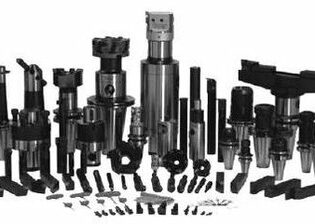A cemented carbide boring tool is one type of tool used for boring operations. It is commonly used for internal hole machining, hole enlargement, internal contouring, and similar tasks. The tool may have one or two cutting edges and is designed specifically for roughing, semi-finishing, or finishing operations on existing holes. Cemented carbide boring tools can be used on boring machines, lathes, or milling machines.
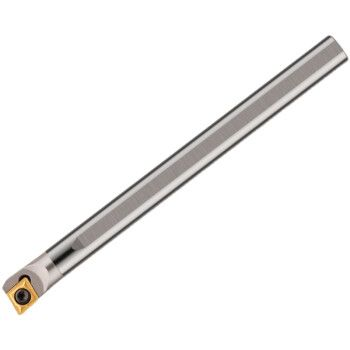
Types of Boring Tools
Cemented Carbide Boring Tools are mainly classified into three types based on the number of cutting edges: single-edge boring tools, double-edge boring tools, and multi-edge boring tools. They can also be categorized according to the processed surface: through-hole boring tools, blind-hole boring tools, step-hole boring tools, and end-face boring tools. Furthermore, they can be classified by their structure: solid type, assembly type, and adjustable type.
Below, we will focus on two commonly used cemented carbide boring tools: the single-edge boring tool and the double-edge boring tool.
Single-edge Boring Tool
The structure of the single-edge boring tool is similar to that of a lathe tool. The tool head is mounted in the tool bar and can be manually adjusted and secured in position with a screw, depending on the size of the hole being processed. The tool head can be installed perpendicular to the boring bar axis for through-hole boring or inclined for blind-hole boring. as only one main cutting edge is involved in the operation, the production efficiency is relatively low. Therefore, it is often used for single-piece or small-batch production.
When the nut is rotated, the spindle with the tool head can move in a straight line along the directional key, and the reading precision of the dial indicator can reach 0.001 millimeters.
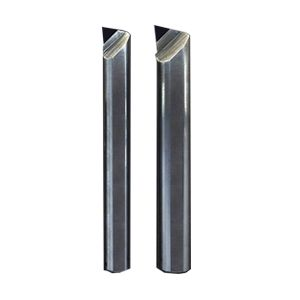
Double-edge Boring Tool
The double-edge boring tool has two symmetric cutting edges, allowing the radial forces during boring to cancel each other out. The size and accuracy of the workpiece hole are ensured by the radial dimension of the cemented carbide boring tool. The double-edge boring tool has two cutting teeth cutting simultaneously on both sides of the center, and the radial forces generated during cutting balance each other out, which allows for increased cutting amounts and higher production efficiency. Double-edge boring tools are further classified into floating boring tools and fixed boring tools, depending on whether the cutting blade floats on the boring bar. Floating boring tools are suitable for precision machining of holes and can produce highly accurate and smooth-surfaced holes, functioning similar to a reamer.
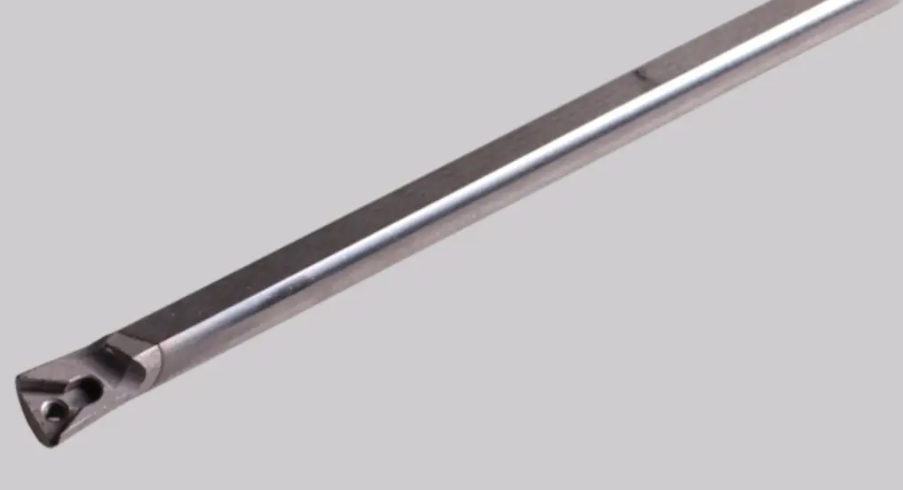
Materials of Boring Tool Inserts
The boring tool inserts can be made from various materials, including cemented carbide, metal ceramics, ceramics, PCD (Polycrystalline Diamond), and PCBN (Polycrystalline Cubic Boron Nitride).
Cemented carbide boring tool inserts mostly utilize PVD (Physical Vapor Deposition) or CVD (Chemical Vapor Deposition) coatings. They are suitable for machining a wide range of materials, such as most steels, titanium alloys, cast iron, and non-ferrous metal alloys. They are also used for processing high-temperature alloys and austenitic stainless steels.
Ceramic inserts can be categorized into two main types: alumina-based (Al2O3) and silicon nitride-based (Si3N4). They are used for boring operations on alloy steels, tool steels, and martensitic stainless steels with a hardness greater than HRC60. Ceramic inserts are also employed for precision boring of hardened steels, cast iron (with a hardness of HRC45 or higher), nickel-based, and cobalt-based alloys.
Silicon nitride-based ceramic inserts come in coated and uncoated grades. They are used for boring operations on grey cast iron and nodular cast iron, as well as for high-temperature alloy machining.
Metal ceramics are composite materials consisting of titanium carbide or titanium carbonitride as the base material combined with metals such as nickel or cobalt as a binder. They exhibit good resistance to chip adhesion and plastic deformation, making them suitable for precision boring with stringent surface finish requirements. Metal ceramic inserts are used for high-speed precision and semi-precision boring of most carbon steels, alloy steels, and stainless steels. When machining grey cast iron and nodular cast iron, they also offer long tool life and good surface finish.
Polycrystalline Diamond (PCD) inserts have PCD cutting edges brazed onto a cemented carbide substrate. The cutting edges of PCD tools maintain sharpness for an extended period, making them suitable for high-speed cutting.
Polycrystalline Cubic Boron Nitride (PCBN) has a hardness second only to PCD. PCBN inserts are commonly used for precision boring of hardened steels, tool steels, high-speed steels (HRC45~60), grey-hard cast iron, and powder metallurgy materials. In high-speed machining, PCBN inserts can achieve longer tool life compared to other types of tool inserts when machining the same workpiece.
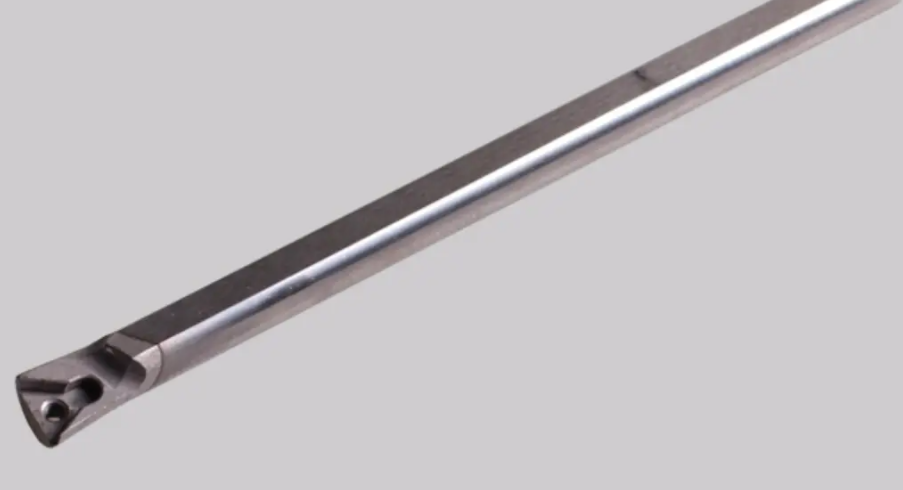
The difference between a boring tool and a reamer
Boring Tool
Boring tools are generally equipped with a cylindrical shank, although some larger workpieces may use square shanks.
Boring tools often have cutting edges on both the radial and axial sides.
Boring operations are referenced to the rotation axis of the machine tool’s main spindle.
The chips produced during boring are continuous.
The precision of boring operations depends on the machine tool, and the surface finish depends on the skill level of the operator. Boring tools are commonly used for achieving high straightness requirements in hole machining.
Reamer
Reamers are mostly constructed with a working part and a shank. They only have radial cutting edges.
Reamers are positioned based on the hole itself.
Reamer chips are typically in the form of small chips or powdery particles that stick to the tool.
Reamers are used for hole machining with higher surface finish requirements and lower straightness requirements.
In summary, the key differences between a boring tool and a reamer lie in their structure, cutting edges, positioning reference, chip formation, and the types of hole machining they are commonly used for. Boring tools are more versatile for achieving precise straightness requirements in hole machining, while reamers are better suited for achieving high surface finish requirements in holes.
